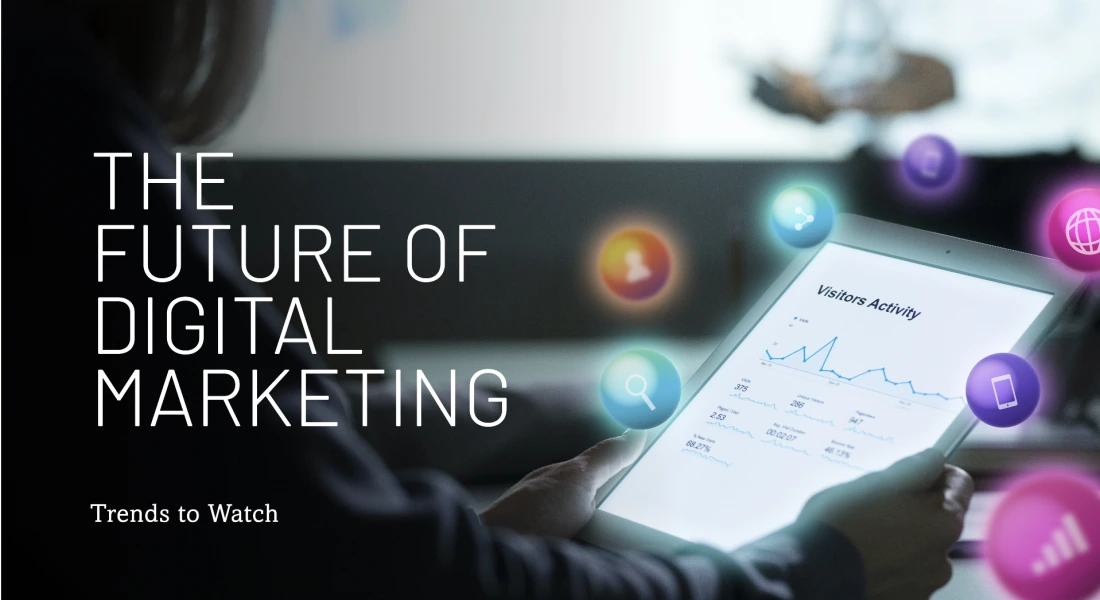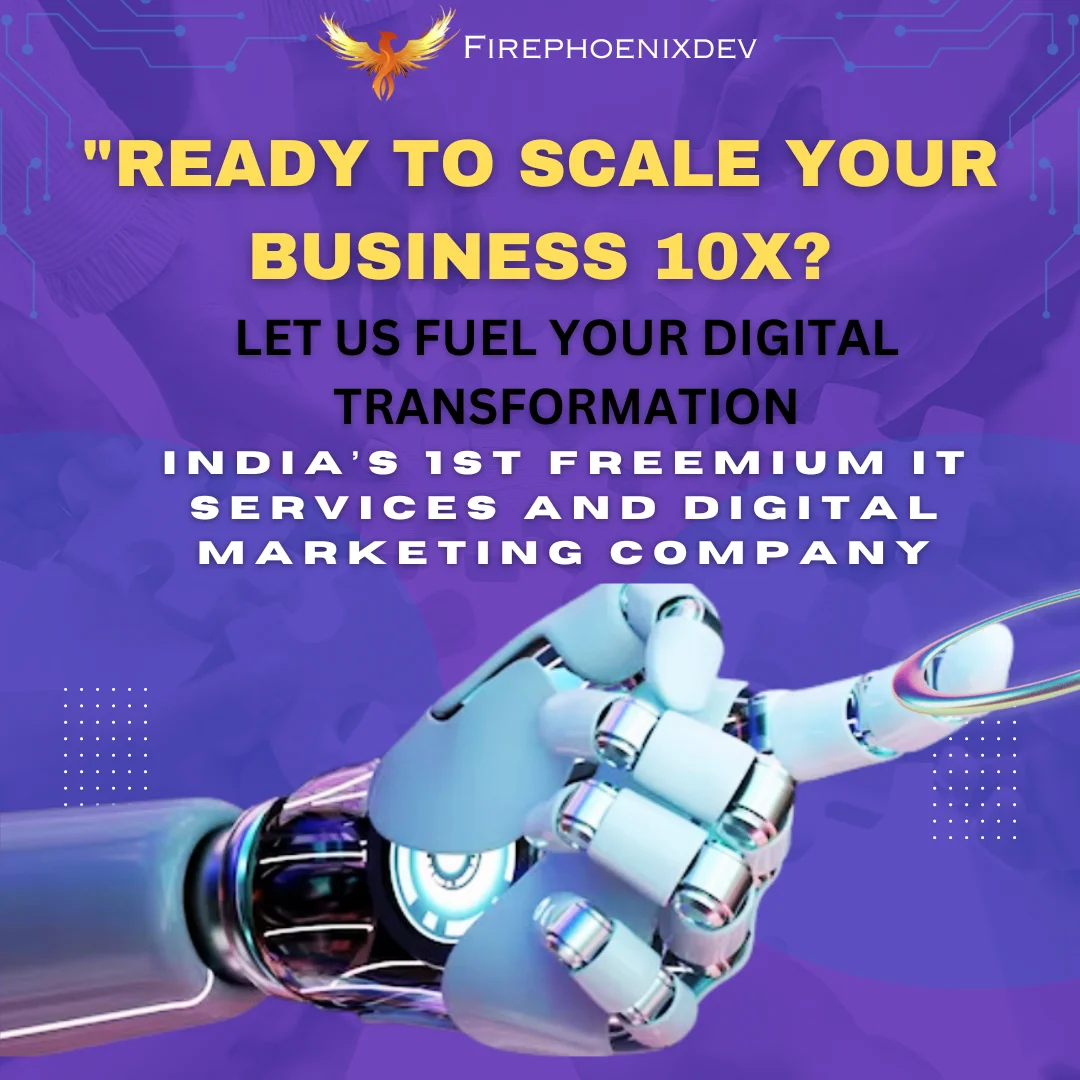
The Future of Digital Marketing: Trends to Watch
The future of digital marketing is being shaped by rapidly evolving technologies, shifting consumer behaviours, and new regulatory landscapes. Staying ahead of these trends is crucial for marketers looking to maintain a competitive edge. Here are the key digital marketing trends to watch in the coming years:
1. Artificial Intelligence and Machine Learning
- AI-Powered Marketing: Artificial Intelligence (AI) is transforming how marketers approach customer engagement. AI tools are increasingly being used for automating tasks, predicting consumer behaviour, and personalizing content at scale. AI-driven chatbots, personalized recommendations, and predictive analytics are becoming mainstream.
- Enhanced Customer Insights: Machine learning algorithms can analyse vast amounts of data to uncover deep insights into customer preferences and behaviours. This allows for more accurate targeting, segmentation, and forecasting.
2. Hyper-Personalization
- Data-Driven Personalization: Consumers now expect personalized experiences. Hyper-personalization, driven by data analytics, allows marketers to create highly tailored content, offers, and recommendations based on individual user behaviour, preferences, and real-time interactions.
- Dynamic Content: Dynamic content that changes based on user data (e.g., location, device, past behaviour) will become more prevalent, enabling marketers to deliver more relevant and timely messages.
3. The Rise of Voice and Visual Search
- Voice Search Optimization: With the growing popularity of voice-activated devices like smart speakers, optimizing for voice search is becoming essential. This involves focusing on conversational keywords, natural language queries, and ensuring content can be easily understood by voice search algorithms.
- Visual Search: Visual search tools, such as Google Lens and Pinterest Lens, allow users to search using images instead of text. Marketers will need to optimize their images and visual content with descriptive tags, high-quality visuals, and relevant metadata to capture traffic from visual searches.
4. Video Marketing Dominance
- Short-Form Video Content: Platforms like TikTok, Instagram Reels, and YouTube Shorts have popularized short-form video content. These bite-sized videos are highly engaging and shareable, making them a powerful tool for brand storytelling and product promotion.
- Live Streaming: Live video is gaining traction as a way for brands to connect with audiences in real-time. Whether it's product launches, Q&A sessions, or behind-the-scenes content, live streaming offers an authentic way to engage with consumers.
5. The Growth of Augmented Reality (AR) and Virtual Reality (VR)
- AR for Enhanced Shopping Experiences: Augmented Reality (AR) is being increasingly used in eCommerce to allow customers to visualize products in their own space (e.g., trying on clothes virtually, seeing how furniture fits in their home). AR enhances the shopping experience and can drive higher conversion rates.
- VR for Immersive Experiences: Virtual Reality (VR) is being used to create immersive brand experiences. Whether it’s virtual store tours, immersive storytelling, or interactive product demonstrations, VR offers new ways to engage customers.
6. Social Commerce and Shoppable Content
- Social Media as a Sales Platform: Social media platforms are evolving into full-fledged sales channels. Features like Instagram Shopping, Facebook Marketplace, and TikTok’s shopping integration allow users to discover and purchase products directly within the app.
- Shoppable Content: Integrating shopping capabilities into content (e.g., shoppable videos, posts, and stories) enables consumers to purchase products seamlessly without leaving the platform, reducing friction in the buyer’s journey.
7. Privacy and Data Security
- Stricter Data Regulations: With the increasing emphasis on data privacy (e.g., GDPR in Europe, CCPA in California), marketers need to prioritize transparent data practices. Consumers are becoming more aware of how their data is used, and businesses need to build trust by adhering to privacy regulations.
- First-Party Data Strategies: As third-party cookies phase out, businesses are focusing more on first-party data collection (e.g., data collected directly from customers through websites, apps, and CRM systems). This shift requires developing strategies for gathering and leveraging first-party data effectively.
8. The Evolution of Content Marketing
- Interactive Content: Interactive content, such as quizzes, polls, and interactive infographics, is becoming more popular as it engages users and encourages active participation. This type of content can also provide valuable data on user preferences and behaviour.
- Content Experience: Beyond just producing content, the focus is shifting toward delivering a holistic content experience. This involves creating a seamless journey across different content types and platforms, ensuring that each touchpoint is engaging and adds value.
9. Sustainability and Ethical Marketing
- Eco-Friendly Marketing Practices: As consumers become more environmentally conscious, they expect brands to demonstrate sustainability in their operations and marketing. Brands that align with eco-friendly practices and communicate their efforts transparently will resonate more with consumers.
- Purpose-Driven Marketing: Consumers increasingly prefer brands that stand for a cause or have a clear purpose. Purpose-driven marketing involves aligning your brand with social, environmental, or cultural issues that matter to your audience, creating deeper connections.
10. The Metaverse
- Virtual Worlds and Digital Real Estate: The metaverse, a collective virtual shared space, is emerging as the next frontier in digital marketing. Brands are beginning to explore opportunities in virtual worlds, including virtual storefronts, events, and digital collectibles (NFTs).
- Brand Presence in Virtual Spaces: As the metaverse grows, establishing a brand presence in these virtual environments will become increasingly important. This could involve virtual billboards, branded virtual goods, or immersive brand experiences.
11. Advanced Marketing Automation
- AI-Driven Automation: Marketing automation is becoming more sophisticated with AI integration, allowing for smarter campaign management, lead nurturing, and customer engagement. Automated processes can now offer real-time personalization and more accurate targeting.
- Cross-Channel Automation: Automation tools are enabling more seamless integration across multiple channels (email, social media, web), ensuring consistent messaging and better tracking of customer interactions across the customer journey.
12. The Role of Influencers and Micro-Influencers
- Niche Influencers: While major influencers still play a significant role, there is a growing shift towards micro-influencers who have smaller, more engaged audiences. These influencers often offer higher engagement rates and more authentic connections with their followers.
- Long-Term Partnerships: Brands are increasingly looking for long-term partnerships with influencers to build more sustained and genuine brand associations, rather than one-off promotional posts.
13. Omnichannel Marketing
- Seamless Customer Experience: Omnichannel marketing involves creating a consistent and integrated customer experience across all digital and physical touchpoints. Whether a customer is interacting with your brand in-store, on a mobile app, or on social media, the experience should be seamless and connected.
- Cross-Channel Integration: Effective omnichannel strategies require integrating various channels and platforms to provide a unified message and user experience. This means ensuring that customer interactions are synchronized and data is shared across channels to enhance personalization and engagement.

